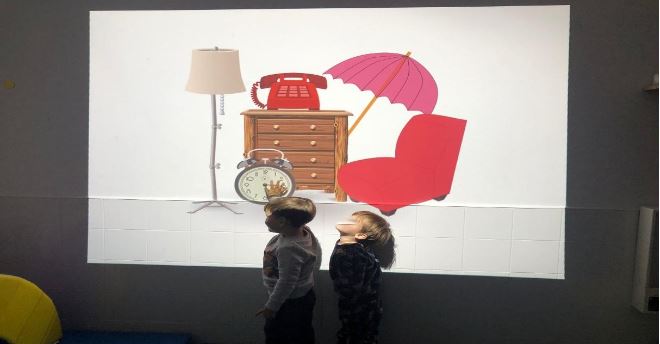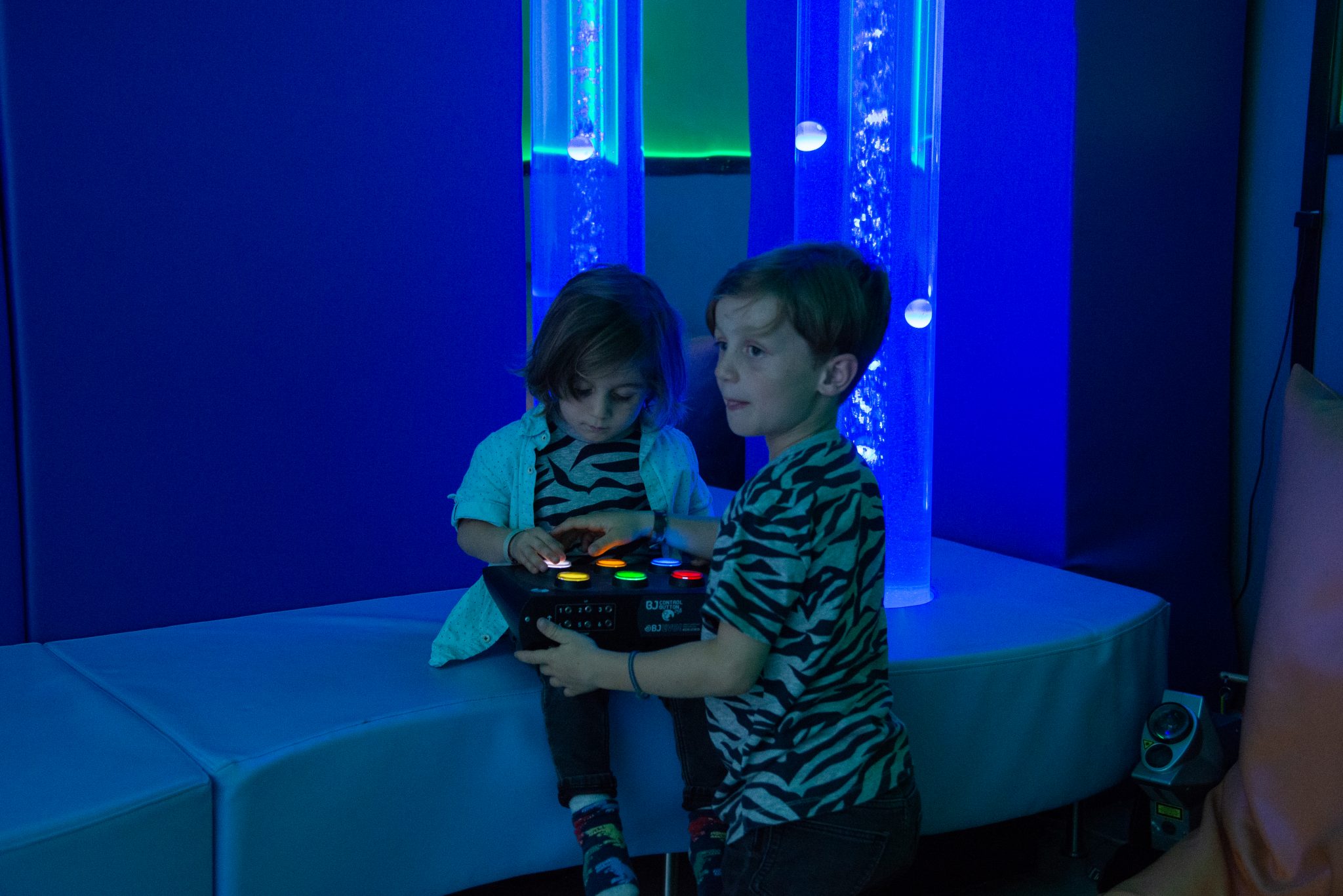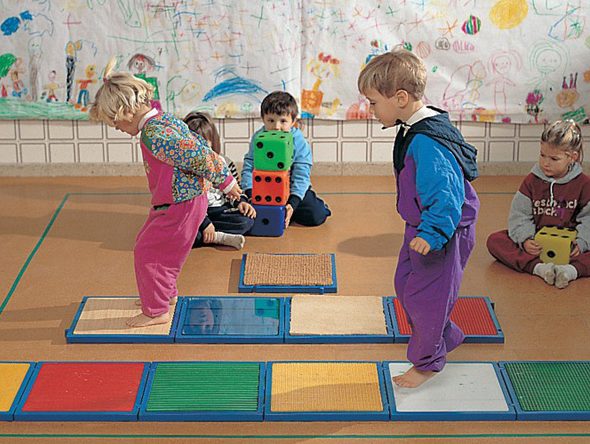It is highly rewarding for professionals and students alike to have access to a multisensory room, as it allows for therapeutic objectives to be achieved in a playful and highly experiential way. It is also an excellent resource for stimulating aspects of learning or for relaxation sessions.
In the multisensory stimulation classroom at CEIP “Francisco Giner de los Ríos” in Albacete, basic aspects of learning are worked on individually or in small groups with students from Early Childhood Education and some Primary Education classrooms.

Two students working on verbal comprehension
Let’s Go to the Bubble Room!
Our room began as a small corner with just a few sensory elements. A few months ago, we contacted Qinera to renovate the room and incorporate new resources that would take our sessions with students to the next level. Our room has since expanded, and now we also have a Luminea bubble tube, Luminea fiber optics, a new LED line, a vibroacoustic pouf, and other UV materials.
One of the most important aspects is that all these elements, along with those we already had, are integrated and interconnected thanks to Qinera’s SHX technology. The addition of the bubble tube and fiber optics has provided the entire school with a fun, motivating resource and an incredible space for learning. In fact, students now call it “our bubble room.”

Using the controller to change the colours of the bubble tube
Stimulating the Senses
Most of our sessions start with a circuit, game, or motor activity. We then move on to cognitive activities and finish with a few minutes of relaxation. In every session, we foster language and social interaction among the children. Some of the contents we’ve worked on this year include:
- Visual stimulation through shapes, sizes, colors, contrasts… using the screen, bubble tube, and fiber optics.
- Auditory stimulation with various sounds and sound contrasts, everyday objects, people, animals, places, weather conditions, songs, rhythms, musical notes, and sound accommodation for students with ASD (who may be highly sensitive to certain sounds/noises).
- Tactile/vibrotactile stimulation using our “giant” pouf, tactile dominoes, and textured floor panels that allowed us to create circuits for motor skills practice.
- Motor stimulation thanks to the circuits and the equipment in the room (padded stairs, ramp, etc.).

Example of textured floor resources
- Cognitive stimulation leveraging the SHX program’s resources to teach concepts (colors, numbers, semantic fields, oral story comprehension, etc.).
- Language stimulation, a key focus area, as the room has been a great motivator for encouraging children to make vocalizations, repeat words, make requests, etc. We have observed significant progress in most of them.
- Social stimulation, since the room is often used in small groups, enabling us to work on turn-taking, sharing games, and other social skills.
The “bubble room,” as you can see, is a space full of stimuli where learning can be seen, touched, heard, and felt, making it more meaningful and enriching.
💻This article was written by the Leadership Team of CEIP “Francisco Giner de los Ríos” in Albacete and reviewed by Qinera’s marketing team.
Free Project Design
If you want to learn more about the benefits of Multisensory Environments or see how you could adapt it to your space, therapeutic goals, and users, you can send an email to hello@qinera.com.












